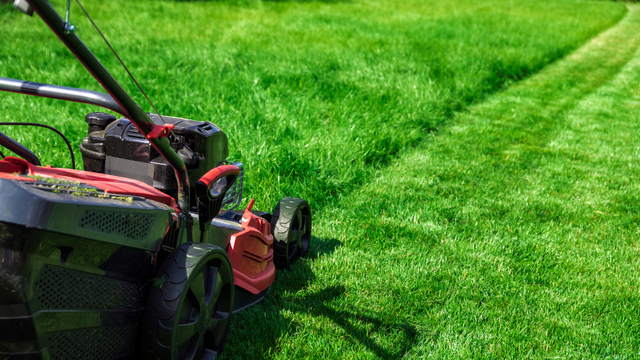
A well-maintained yard can greatly enhance the overall appearance of your home and create a welcoming outdoor space for relaxation and enjoyment. Whether you have a small garden or a sprawling lawn, adopting some best practices for yard maintenance can help keep your yard in top shape throughout the year. Here are some essential tips to consider:
Regular Mowing And Trimming:
Regular mowing is key to maintaining a healthy and attractive lawn. Set a regular schedule for mowing, typically once a week during the growing season, and adjust the height of your mower blade to ensure you're not cutting the grass too short. By visitingOpulandscape.com , you can access a wide range of services that cater to your regular mowing and trimming requirements. Their team is equipped with the necessary tools and skills to handle properties of all sizes and complexities, ensuring a well-maintained and beautiful landscape. Remember to trim the edges along walkways, driveways, and flower beds for a neat and polished look.
Proper Watering:
Watering your yard correctly is crucial for healthy growth. Aim to water your lawn deeply and infrequently rather than shallowly and often. This encourages the roots to grow deeper, making your grass more resistant to drought. Water early in the morning or late in the evening to minimize evaporation. Use a sprinkler system or a hose with a nozzle to ensure even coverage.
Fertilization And Soil Care:
Regular fertilization provides the necessary nutrients for your plants and grass to thrive. Conduct a soil test to determine the specific nutrient requirements of your yard and choose a suitable fertilizer accordingly. Apply fertilizer during the appropriate seasons, following the instructions on the packaging. Additionally, consider aerating your lawn once a year to alleviate soil compaction and promote better water and nutrient absorption. If you are seeking professional fertilization and soil care services, Opulandscape is an excellent choice. Their team of experts is dedicated to delivering exceptional results and providing ongoing care to maintain the health and beauty of your lawn and landscape. You can contact us to discuss your specific needs and schedule a consultation.
Weed Control:
Weeds can quickly overrun a yard and compete with your plants for essential resources. Implement a weed control strategy that includes manual removal, mulching, and the use of herbicides if necessary. Pull weeds by hand, making sure to remove the entire root system. Apply a layer of organic mulch around plants and flower beds to suppress weed growth. If using herbicides, choose selective ones that target specific weeds while sparing desirable plants.
Pruning And Trimming:
Regular pruning and trimming help maintain the shape and health of your trees, shrubs, and bushes. Remove dead or damaged branches, and thin out dense foliage to promote air circulation and sunlight penetration. Use sharp, clean tools to prevent the spread of disease, and prune during the appropriate season for each specific plant.
Pest And Disease Management:
Identify common pests and diseases that can affect your yard and take preventive measures to keep them at bay. Regularly inspect your plants for signs of infestation or disease, such as discolored leaves, holes, or webs. Introduce beneficial insects or use organic pest control methods whenever possible to avoid harming beneficial wildlife and pollinators.
Regular Clean-Up:
Maintaining a tidy yard involves regular clean-up tasks. Remove fallen leaves, branches, and debris to prevent them from smothering your lawn and creating a breeding ground for pests. Clean out gutters to ensure proper drainage and prevent water damage to your home. Regularly sweep or power wash walkways, patios, and decks to keep them clean and safe.
Seasonal Adjustments:
Your yard's needs will vary throughout the year, so adjust your maintenance routine accordingly. In colder months, prepare your yard for winter by clearing away leaves, protecting sensitive plants, and winterizing your irrigation system. In warmer months, focus on regular watering, pest control, and providing shade for delicate plants.
Proper Mulching:
Mulching offers numerous benefits for your yard. It helps retain moisture, suppresses weed growth, regulates soil temperature, and adds nutrients as it breaks down. Apply a layer of mulch around trees, shrubs, and flower beds, making sure to leave space around the base of plants to prevent rot.
Efficient Irrigation:
Water conservation is essential in yard maintenance. Consider installing an irrigation system with smart technology that adjusts watering based on weather conditions and soil moisture levels. Use drip irrigation or soaker hoses for targeted watering and to minimize water loss due to evaporation.
Sustainable Landscaping:
Embrace sustainable practices in your yard by incorporating native plants, which are adapted to the local climate and require less water and maintenance. Planting a variety of flowers, shrubs, and trees can also attract pollinators and beneficial insects, promoting a balanced ecosystem.
Conclusion
In conclusion, maintaining a beautiful and healthy yard requires a combination of regular care, proper watering, fertilization, weed control, pruning, and pest management. By following these best practices and adjusting your maintenance routine according to the seasons, you can ensure that your yard remains in top shape year-round. A well-maintained yard not only enhances the curb appeal of your home but also provides a welcoming outdoor space for you and your family to enjoy. So, roll up your sleeves, put on your gardening gloves, and let your yard flourish with these tips and practices.